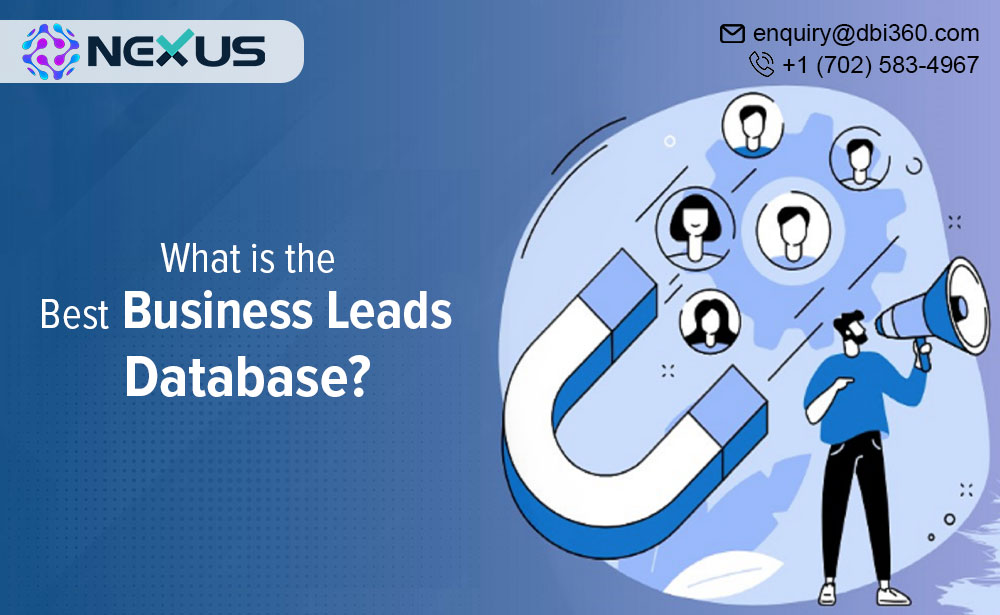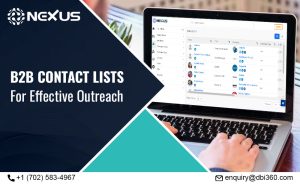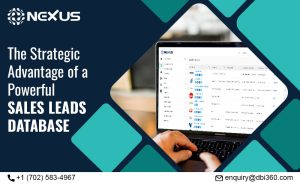An essential component for achieving revenue success is a Business Leads Database.
This database consolidates contact details of your optimal prospects, streamlining intricate processes like prospecting, lead generation, and outreach activities.
To put it simply, the significance of a robust Business Leads Database cannot be overstated when aiming to effectively connect with the appropriate prospects and buyers.
For those unfamiliar with the concept of a Business Leads Database, the question that often arises is: What exactly is B2B data and where can it be acquired?
What is a B2B Sales Leads Database?
B2B data, in essence, pertains to business-to-business information, encompassing details about other businesses and the individuals within those organizations.
This type of data serves as a valuable resource for B2B startups aiming to effectively market their products or services to other businesses.
The primary focus of B2B data revolves around key decision-makers within specific companies. The rationale behind this emphasis is straightforward: as a B2B marketer, your objective is to influence the purchasing decisions of your leads.
To achieve success, directing attention towards individuals with decision-making authority and creatively targeting them becomes essential.
Rapidly establishing connections with the right people significantly enhances the likelihood of fostering relationships that ultimately result in conversions.
An efficient Business Leads Database is essentially a methodical compilation of information pertaining to other businesses.
This dataset primarily comprises telephone numbers and email addresses, earning its designation as a B2B contact list. A Business Leads Database or contact list instrumental in propelling lead generation and pipeline development will encompass:
-
Demographic data – details associated with a population’s age, email ID, phone number, location, and skills.
-
Firmographic data – comprehensive business and company information, encompassing the company’s name, location, size (measured by the number of employees and revenue), and industry.
-
Technographic data – insights into the software and hardware utilized by prospective customers.
How Can I Get More B2B Data?
Understanding the concept of a Business Leads Database, let’s address a common query: “where does B2B data come from?” There are two primary origins for B2B data:
-
Public Channels: These are outlets where personal and organizational data is readily accessible. Examples include websites, newspapers, online news articles, and profiles on social media platforms like LinkedIn and Twitter.
-
Private Channels: These are outlets with restricted access to data. Information is limited to those with permission and subscribers. Examples encompass paywall websites and Data as a Service (DaaS) providers.
Identifying the source of the data is one aspect; acquiring it is another challenge. Small and medium-sized businesses confront two options for obtaining data from both public and private channels.
Each option comes with its distinct strengths and weaknesses.
In-house Data Sourcing
Opting for in-house data sourcing offers a notable advantage with the constant accessibility of the IT team.
Additionally, smaller enterprises can leverage budget-friendly email finder tools and other economical methods to amass essential data. This becomes especially beneficial when financial constraints hinder the possibility of outsourcing data.
However, the drawbacks primarily revolve around resource availability. Establishing such a team necessitates training existing staff and enhancing the existing infrastructure.
If there is a lack of experienced personnel in-house, the alternative is to recruit new hires, provide training, and dedicate time to the hiring process, inevitably impacting payroll costs.
Outsourcing B2B Data
Outsourcing B2B data offers a substantial advantage, allowing professionals with a specific skill set to handle the task efficiently.
Many savvy B2B businesses opt to engage a third-party firm due to the inherent cost-cutting benefits associated with this approach.
By doing so, they eliminate the need to invest in infrastructure, space, storage, and the training of in-house IT staff.
When it comes to cost reduction, it’s essential to recognize that you only enlist the services of the specialist firm for the duration of the particular project. Once their task is completed, there are no additional costs incurred on your side.
While it’s true that outsourcing may initially involve competitive rates for in-demand skills, this scenario is often short-lived.
Comparatively, when analyzing the overall costs of establishing and maintaining a specialized IT infrastructure versus hiring a professional firm, outsourcing consistently proves to be a more cost-effective solution.
This results in a significantly lower B2B cost per lead, making it a compelling choice for businesses aiming to maximize efficiency and minimize expenses in their quest for business leads.






